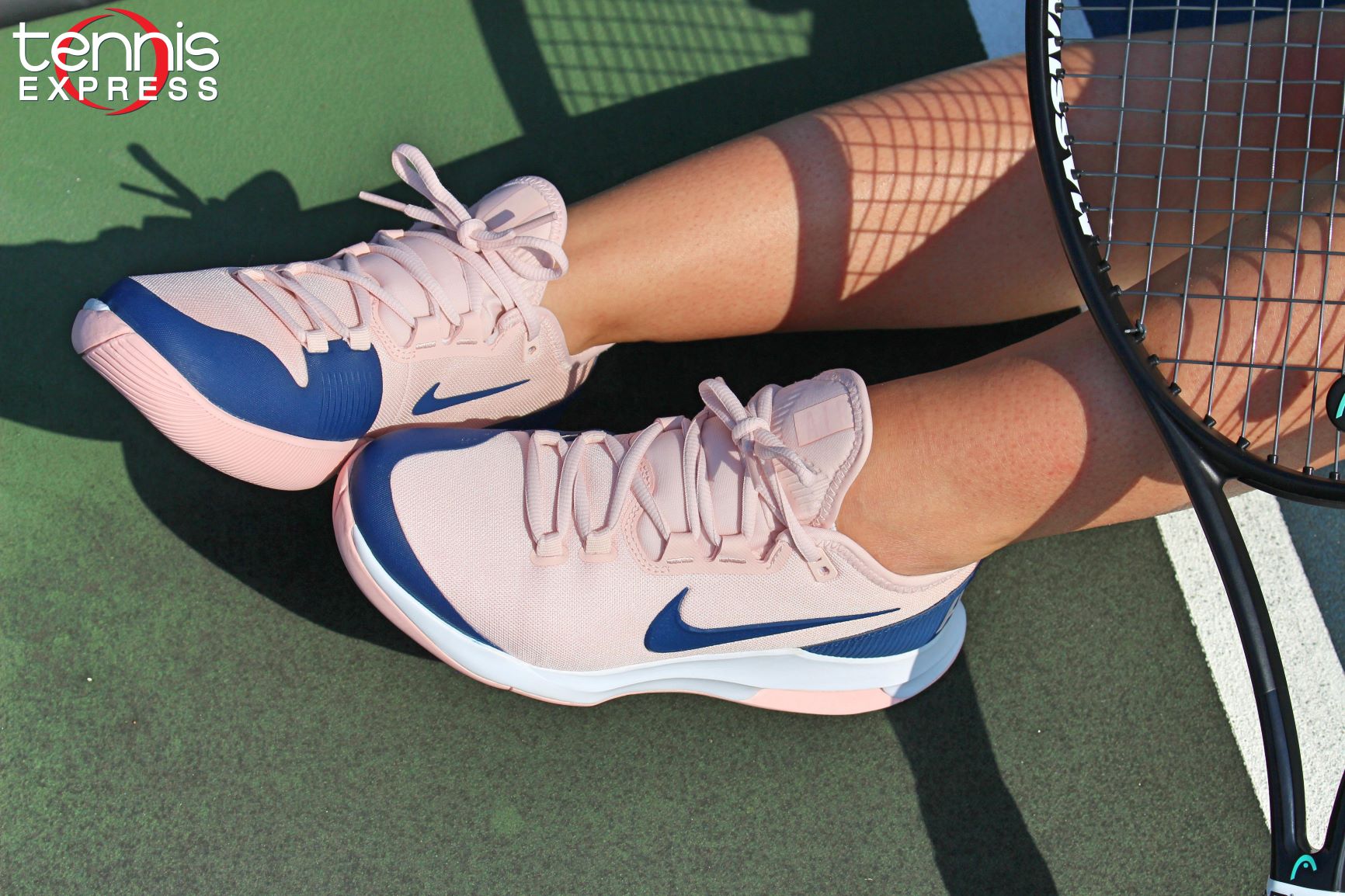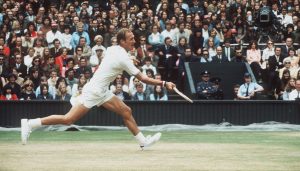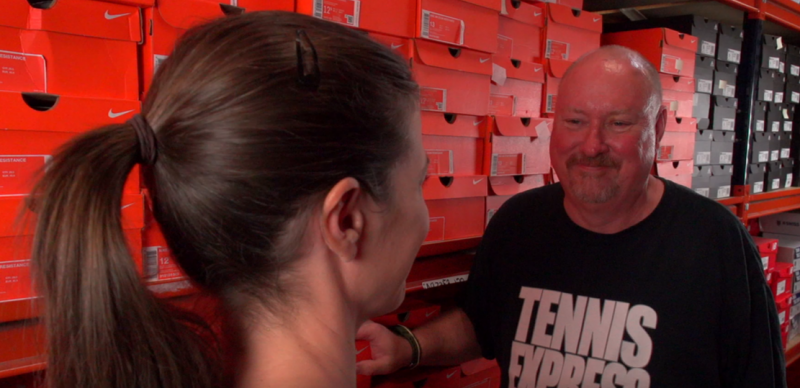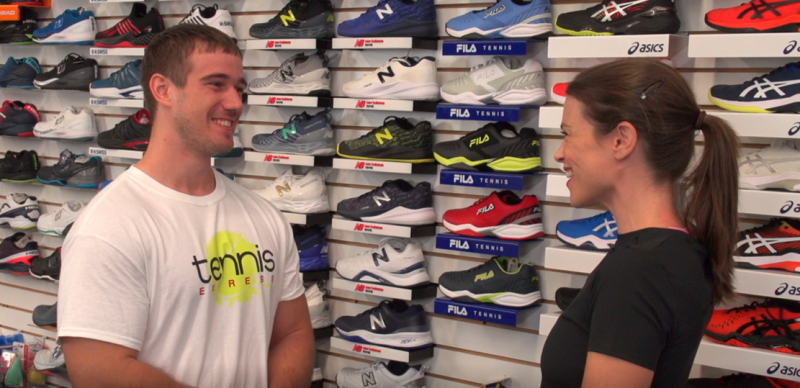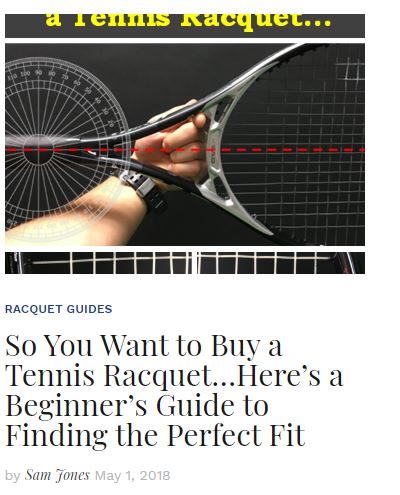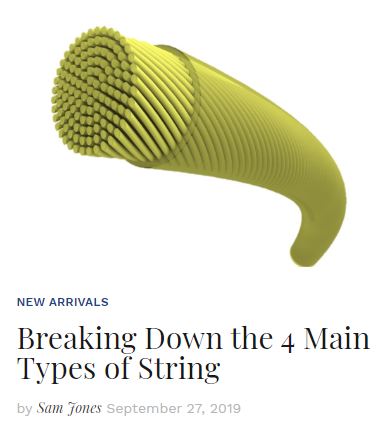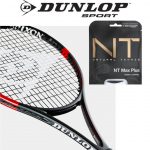Tennis Shoes. They’ve been around for decades. Specialized for the unique demands of the sport, these tools have powered tennis greats to new heights, and evolved with the game itself. Footwear has come a long way since the days of Adidas’ Stan Smiths and Agassi’s Nike Tech Challenges. And here at Tennis Express, we’ve played an integral part in helping tennis players at all levels of the game find their perfect fit since the turn of the millennium.
So where does the sport stand now? We live in an age where high-end tennis gear is more available to the masses than ever before. The catch is understanding what the differences are between all of these similarly-purposed shoes. To seek clarity, I spoke with the leading shoe specialist at Tennis Express, Brett Snyder.
So hi Brett, thank you for joining me today. I’d like to know: What are the primary types of tennis shoes?
There are three types of shoes. You have your durability shoes, your lightweight shoes, and there’s a third category that we call our value shoes. A durability shoe would be a heavier shoe with a very durable sole. A lot of times it’ll have a 6-month sole warranty. So if you wear through the sole within 6 months, the manufacturer will replace it. Lightweight shoes are a little bit more like a running shoe. They have a lot of mesh, they’re very lightweight, not quite as durable, and not quite as much support as a durability shoe. But some people like to play in a lighter-weight shoe, especially if you’re an explosive mover and rely on your speed to get to the ball. And a value shoe can be one or the other, one of those two types, it’s just a shoe, maybe a Nike seasonal shoe, that we’ve marked down. It might be a durability shoe or a lightweight shoe. It’s really based on price.
Tell me, why is it I couldn’t just wear my running shoes on the court?
Well it’s performance related, but it’s also a safety issue. Running shoes are made to go straight, in a straight line, they’re not made for lateral moving like you do on a tennis court. They don’t have as much support as a tennis shoe has, so you’re more likely to turn your ankle. And you’re not as low to the ground like a tennis shoe is. So again, you’re more likely to turn an ankle in a running shoe.
And could you tell me about the different types of shoes based on different surfaces?
In tennis, there are three types of surfaces: clay, hard and grass. We primarily specialize in shoes for hard courts and clay courts since there aren’t many grass courts in the States. To play on clay, you’ll want what’s called a herringbone sole. Some people call it a zigzag because it looks like a zigzag. You can use the hard court shoes on a clay court, but you wouldn’t want to use a clay court shoe on a hard court because you won’t get as good of a grip, and they’re a little bit softer shoes, so they’re not as durable on a hard court.
So what would you tell someone who has issues with rolling their ankles?
I would say, in general, you’re looking for a little bit heavier shoe that has more lateral support, more stability. Maybe something that even has like a lateral support bar on the outside of the sole. Has a little more support on the top, on the upper. Not an all-mesh shoe, just something that has more, maybe lateral support straps, is going to help hold your ankle and foot in place when you plant your foot, and then push off to go the other way.
I also spoke with Chris Worman, another one of the company’s shoe experts, on overall fit and tennis shoe customizations.
Hey Chris, what are some of the main considerations you make in helping a player find their perfect tennis shoe?
So I’ve owned this pair of tennis shoes for a while but they’re not breaking in like I thought they would. What should I do?
Yeah so that’s actually a pretty common issue that a lot of tennis players face. It just stems from the fact that tennis shoes are going to be more durable and stable than day-to-day shoes. They just take a little bit longer to break in. For a more immediate remedy, you can try different shoe lacing techniques. We have a good resource online if you go to TennisExpress.com/Blog. In the TE Academy section, we have about 7 or 8 different shoe lacing techniques. For example, if your shoe is too tight, we show you how you can loosen it up naturally; and conversely, if it’s too loose, how you can tighten it up. One I personally use is called lock lacing. Basically, my heel sort of slides forward and backward, and that keeps it more stable in the shoe, so that prevents some obvious discomfort. Another thing that you can do…really with tennis shoes, they come with a pretty standard insole, and if you’re not getting enough cushion, stability, or support, you can get a new insole. That would be the same for if your shoes are starting to feel a little dead, but the material is still good. A lot of times the insole wears out first, and you can get a new one to breathe new life into them. Really the last thing I would say is if you have problems in the heel, you can get a heel cup. And that’ll give you some more stability and cushion on that striking phase of the movement.
Ok, but if they are feeling stiff, about how long do you think it takes to wear them in?
It really depends…you’re probably familiar with the different types of tennis shoes that are really common. So lightweight shoe, less material, it’s typically going to loosen up faster. Durable shoes, you know, they might take a little bit longer to break in. And then if you have something that’s a little bit cheaper, a lot of times those materials aren’t as premium, so those might not feel as comfortable. It really just depends on the brand, what type of shoe it is, that sort of thing.
And what can you tell me about socks?
I might not be the best person to ask because when I was playing a lot when I was younger, I would say just give me something and I’ll go play. But the first time I tried performance socks, that made a big difference. I would say to be careful if you’re used to thick socks, make sure you get a thick performance sock, and vice versa for one that’s thin. But really with those, you’re going to get sweat-wicking materials which are obviously nice in a tennis shoe on a hot court. They’ll have better underfoot cushioning, and also some arch stability that’s great for lateral movements.
What can you tell me about the different brands of tennis shoes?
So really that’s preference. Obviously I can’t recommend a certain brand, it really depends on the player. My biggest recommendation would be, for example, if you’re a size 10 in one shoe, especially across brands, that might not stay the same. So in an ideal world, you would try on the shoe in person. If you can’t, I would just say that, especially if you’re changing brands, but even sometimes within the brand, just look online and see if you can find what other people are saying. You know, this one ran a little narrow, or this one was a little wide. General rule of thumb, again, this isn’t true for every shoe, but Nike’s, ASICS, they tend to run on the narrow side. Whereas brands like brands like K-Swiss or Diadora are a little bit wider. New Balance has a great width option list you can choose from. But really, just take a look online if you can’t try them out in person because a lot of people shop by color, and that’s where they run into the issue. I like that one, but…it doesn’t always translate perfectly.
And last question: What’s your favorite tennis shoe?
You wouldn’t say which kid was your favorite, so I will pass on that question.
I hope that sheds some light on the main differences between the hundreds of different tennis shoes out there. For more tips and advice, visit the Tennis Express YouTube channel and TennisExpress.com.
Learn More

